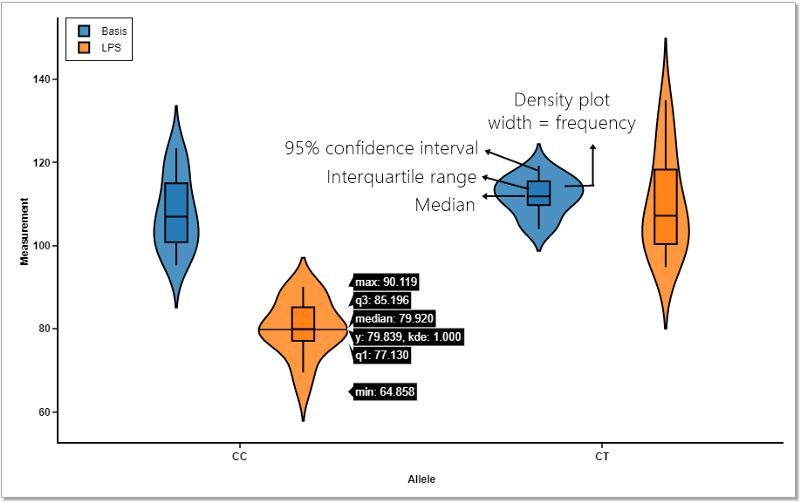- Plot Confidence Intervals In Excel
- Plot 95% Confidence Interval Rate
- Plot 95% Confidence Interval R
- Construct A 95 % Confidence Interval
How to add 95% confidence intervals in the calibration plot? Dear experts: I am a newbie to R. Recently, I try to make prediction models with R and the Design library. I have read Prof. Here we show how to calculate confidence intervals for sample means, and plot these intervals along with the raw data. The R package boot allows a user to easily generate bootstrap samples of virtually any statistic that they can calculate in R. From these samples, you can generate estimates of bias, bootstrap confidence intervals, or plots of your bootstrap replicates. Confidence Interval around a Linear Regression Line The gray ‘bands’ around the regression line in the plot above represent the range in which the true regression line lies at a certain level of confidence (95% in the plot). The bands visualize all intervals for every possible x and are tightest where the data is grouped more densely.
- Related Questions & Answers
- Selected Reading
The slope of the regression line is a very important part of regression analysis, by finding the slope we get an estimate of the value by which the dependent variable is expected to increase or decrease. But the confidence interval provides the range of the slope values that we expect 95% of the times when the sample size is same. To find the 95% confidence for the slope of regression line we can use confint function with regression model object.
Example
Consider the below data frame −
Output
Creating regression model to predict y from x −
Example
Output
Finding the 95% confidence interval for the slope of the regression line −
Example
Output
Example
Output
Example
Output

I’m writing a post on how to draw a in 95% confidence interval in R by hand. I spent an hour or so trying to figure this out, and most message threads point someone to the ellipse() function. However, I wanted to know how it works.
The basic problem was this. Imagine two random variables with a bivariate normal distribution, called y, which is an n x 2 matrix with n rows and 2 columns. The random variables are described by a mean vector mu and covariance matrix S. The equation for an ellipse is:
Plot Confidence Intervals In Excel
(y – mu) S^1 (y – mu)’ = c^2
The number c^2 controls the radius of the ellipse, which we want to extend to the 95% confidence interval, which is given by a chi-square distribution with 2 degrees of freedom. The ellipse has two axes, one for each variable. The axes have half lengths equal to the square-root of the eigenvalues, with the largest eigenvalue denoting the largest axis. A further description of this can be found in any multivariate statistics book (or online).
To calculate the ellipse, we need to do a few things: 1) convert the variables to polar coordinates, 2) extend the new polar variables by the appropriate half lengths (using eigenvalues), 3) rotate the coordinates based on the variances and covariances, and 4) move the location of the new coordinates back to the original means. This will make more sense when we do it by hand.
First, generate some data, plot it, and use the ellipse() function to make the 95% confidence interval. This is the target interval (I use it to check myself. If my calculations match, hooray. If not, I screwed up).
Second, get the eigenvalues and eigenvectors of the correlation matrix.
Third, make a vector of coordinates for a full circle, from 0 to 2*pi and get the critical value (c^2).
The vector A above are angles that describe a unit circle. The coordinates of a unit circle are found by x = cos(a) and y = sin(a) (use trigonometry of a triangle to get this, where the hypotenuse = 1). We need to extend the unit circle by the appropriate lengths based on the eigenvalues and then even more by the critical value.
If you plot M, you’ll get an ellipse of the appropriate axes lengths, but centered on 0 and unrotated. Rotate the ellipse using the eigenvectors, which describe the relationships between the variables (more appropriately, they give the directions for the vectors of the major axes of variation). Use the equation u*M’ (write this out to see why this works).
The final step is to move the rotated ellipse back to the original scale (centered around the original means) and plot the data.
Plot 95% Confidence Interval Rate
This gives the following plot, with the red line being the output from the ellipse() function.
And that’s that! Hopefully this helps someone like me who spent hours looking but couldn’t find anything.
Plot 95% Confidence Interval R
